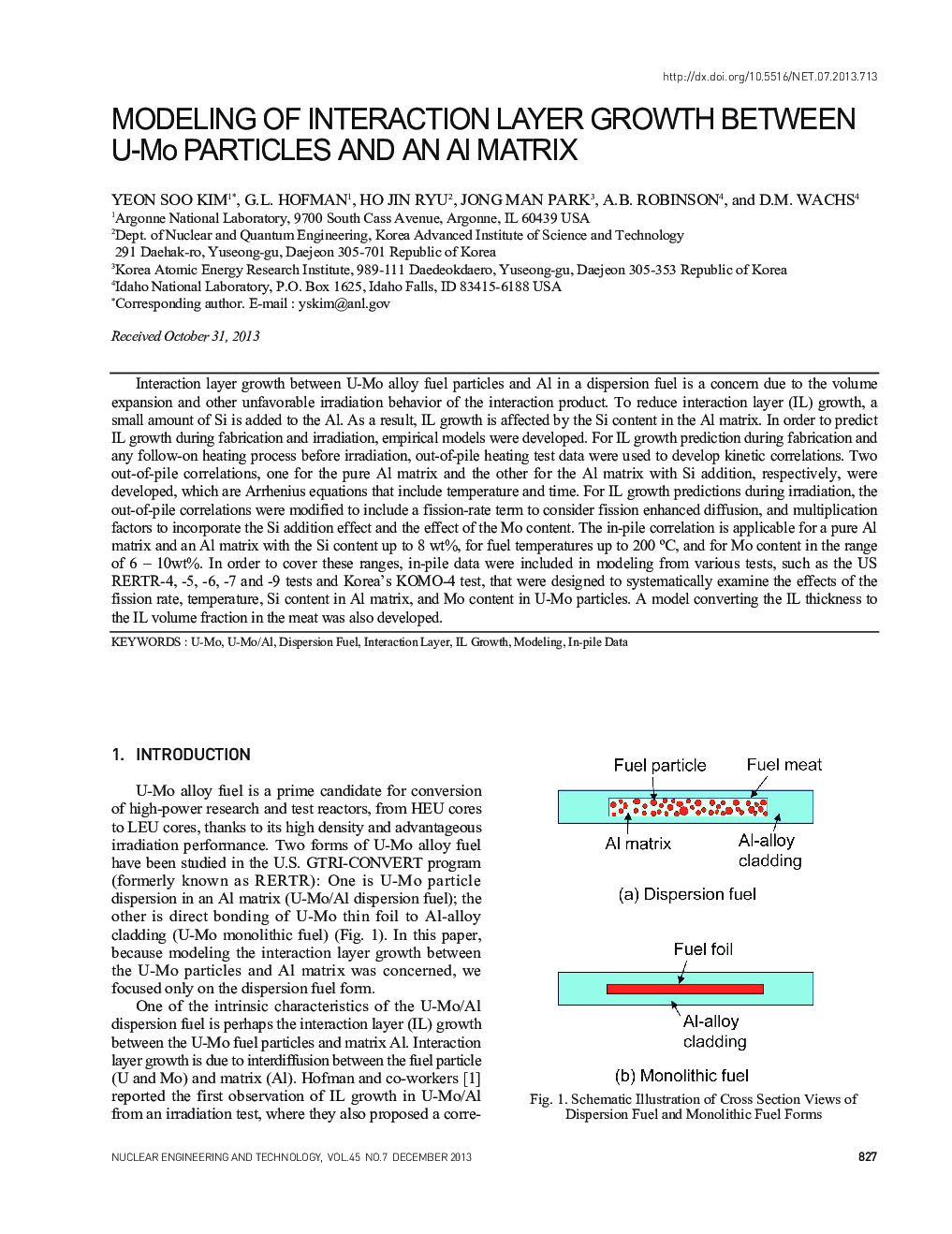| Article ID | Journal | Published Year | Pages | File Type |
|---|---|---|---|---|
| 1740094 | Nuclear Engineering and Technology | 2013 | 12 Pages |
Interaction layer growth between U-Mo alloy fuel particles and Al in a dispersion fuel is a concern due to the volume expansion and other unfavorable irradiation behavior of the interaction product. To reduce interaction layer (IL) growth, a small amount of Si is added to the Al. As a result, IL growth is affected by the Si content in the Al matrix. In order to predict IL growth during fabrication and irradiation, empirical models were developed. For IL growth prediction during fabrication and any follow-on heating process before irradiation, out-of-pile heating test data were used to develop kinetic correlations. Two out-of-pile correlations, one for the pure Al matrix and the other for the Al matrix with Si addition, respectively, were developed, which are Arrhenius equations that include temperature and time. For IL growth predictions during irradiation, the out-of-pile correlations were modified to include a fission-rate term to consider fission enhanced diffusion, and multiplication factors to incorporate the Si addition effect and the effect of the Mo content. The in-pile correlation is applicable for a pure Al matrix and an Al matrix with the Si content up to 8 wt%, for fuel temperatures up to 200 °C, and for Mo content in the range of 6 – 10wt%. In order to cover these ranges, in-pile data were included in modeling from various tests, such as the US RERTR-4, -5, -6, -7 and -9 tests and Korea's KOMO-4 test, that were designed to systematically examine the effects of the fission rate, temperature, Si content in Al matrix, and Mo content in U-Mo particles. A model converting the IL thickness to the IL volume fraction in the meat was also developed.
